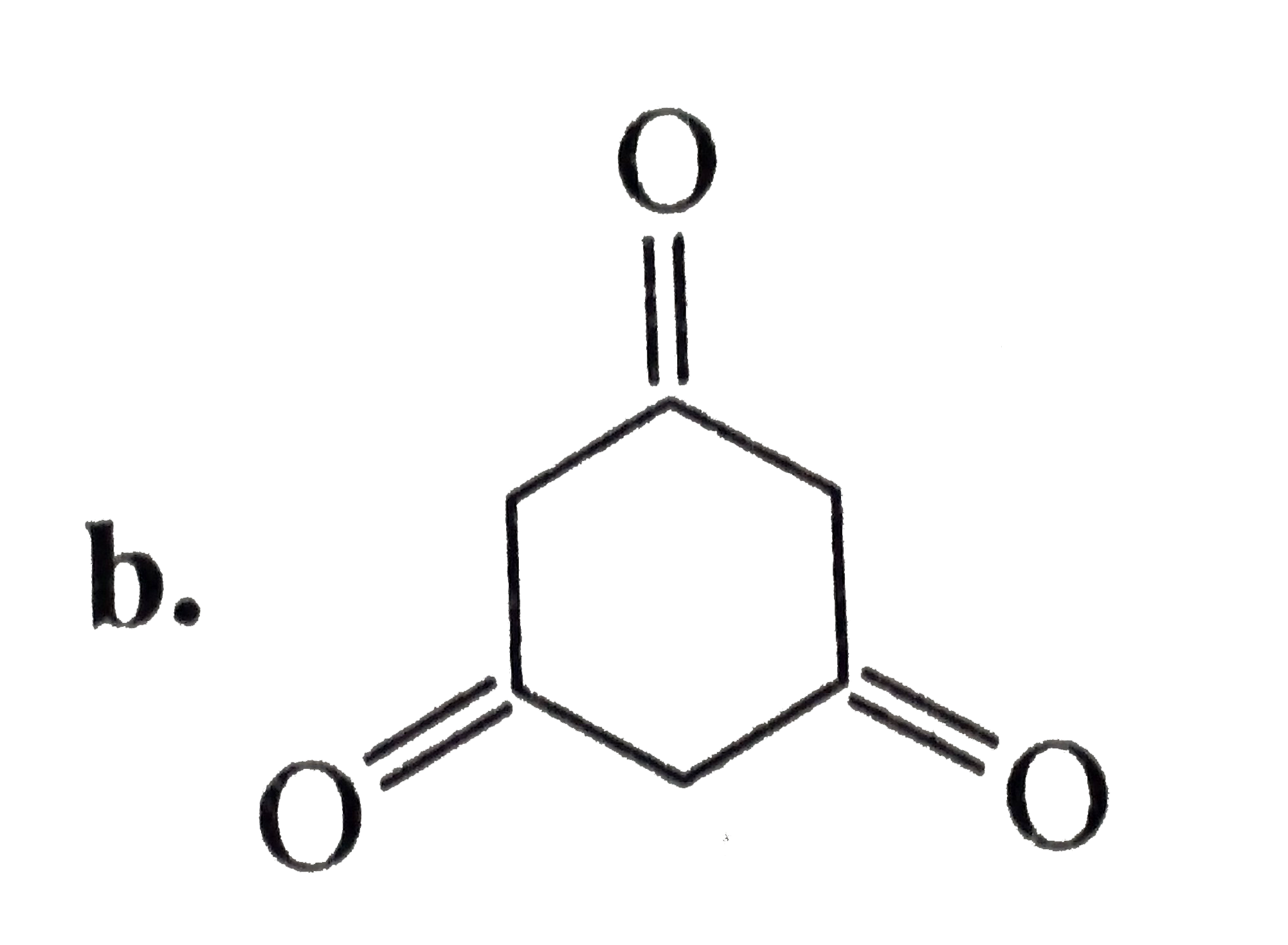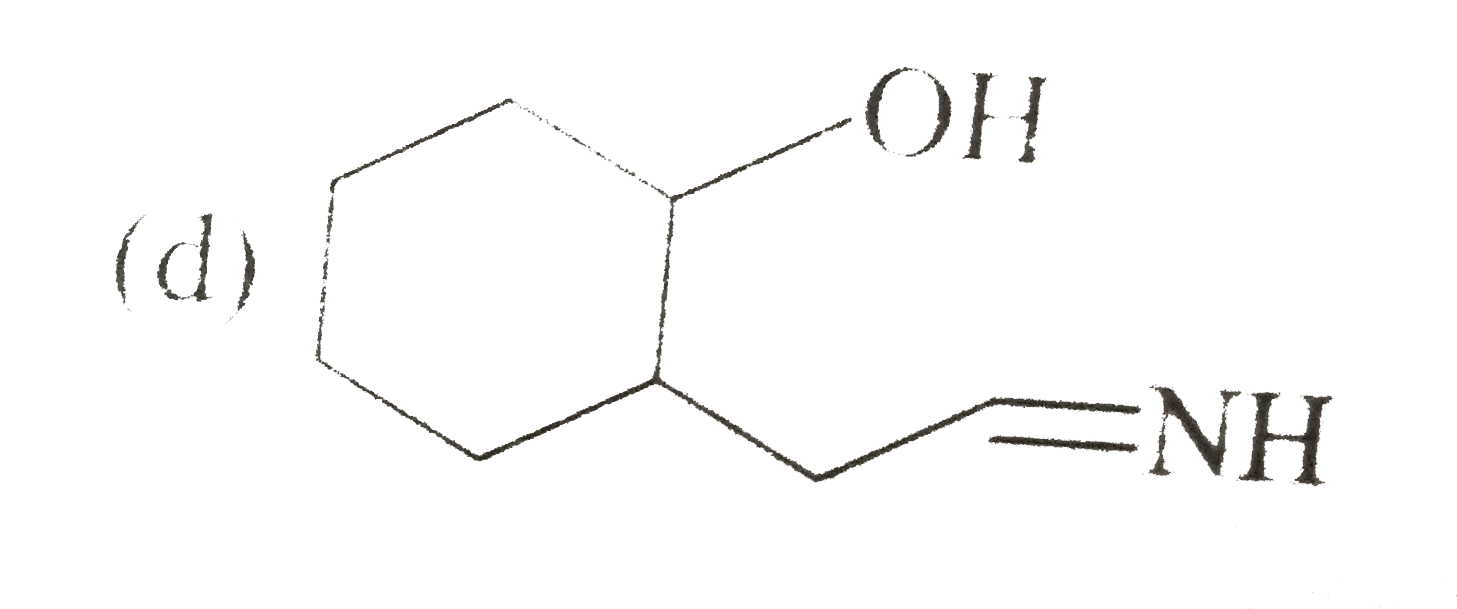Phenols are generally charged with NaBH4/H3O⊕ 1,3- and 1,4-benzenediols and 1,3,5-benzenetriols are unchanged under these conditions. However, 1,3,5-benzenetriol (phloroglucinol) gives a high yield of product (B).




Both (a) and (b)
The correct Answer is:C
Topper's Solved these Questions
- ALCOHOL,PHENOL AND ETHERSBook:CENGAGE CHEMISTRYChapter:ALCOHOL,PHENOL AND ETHERSExercise:Exercises Single Correct
Explore 82 Videos
- ALCOHOL,PHENOL AND ETHERSBook:CENGAGE CHEMISTRYChapter:ALCOHOL,PHENOL AND ETHERSExercise:Exercises Assertion-Reasoning
Explore 10 Videos
- ALCOHOL,PHENOL AND ETHERSBook:CENGAGE CHEMISTRYChapter:ALCOHOL,PHENOL AND ETHERSExercise:Exercises Linked Comprehension
Explore 60 Videos
- ALIPHATIC AND AROMATIC ALDEHYDES AND KETONESBook:CENGAGE CHEMISTRYChapter:ALIPHATIC AND AROMATIC ALDEHYDES AND KETONESExercise:Archives Subjective
Explore 29 Videos
Similar Questions
Give the structure of the major organic products obtained from 3−ethyl−2−pentene under each of the following reaction conditions.
a. HBr in the presence of peroxide
b. Br2/H2O
c. Hg(Oac)2/H2O,NaBH4
View SolutionWhat volume of propane is burnt for every '500cm^(3)' of air used in the reaction under the same conditions? (Assuming oxygen is 15 th of air) C3H8+5O2→3CO2+4H2O
View Solution
Knowledge Check
At a temperature under high pressure
Kw(H2O)=1×10−10
A solution of pH 5.4 under these conditions is sait to be :AacidicBbasicCneutralDamphotericAn orgnaic acid P(C11H12O2) can easily be oxidized to a dibasic acid which reacts with ethyleneglycol to product a polymer dacron. Upon ozonolysis, P gives an aliphatic ketone as one of the products. P undergoes the following reaction sequences to furnish R via Q. the compound P also undergoes another set of reactions to produce S.
S(1). H2/Pd−C,(2). NH3/Δ,(3). Br2/NaOH←−−−−−−−−−−−−−−−−−−−−−−−−−−−−−−−−−−−−(4). CHCl3,KOH,Δ,(5). H5/Pd−CP(1). H2/Pd−C,(2) SOCl2−−−−−−−−−−−−−−−−−−−−−−−−−→(3). MeMgBr,CdCl2,(4). NaBH4Q(1). HCl,(2). Mg/Et2O−−−−−−−−−−−−−−−−−−−−−−−→(3). CO2,(dry ice),(4). H3O+
Q. The compound S isA B
B C
C D
D
An organic compound 'A' has molecular formula C9H13NO and it can be resolved into enatiomers. A does not decolourise bromine water solution. A on reflxing with dilute H2SO4 yields another resolable compound B(C9H14O3) which gives effervescence with NaHCO3. B on treatemet with NaBH4 yields C(C9H16O3) on heating with concentrated H2O4 yields ester D(C9H14O2). Compound A on reduction with LiAIH4, followed by treatement of H2SO4 yields following compound:

Find out structure of compound 'A' :A B
B C
C D
D
An organic compound 'A' has molecular formula C9H13NO and it can be resolved into enatiomers. A does not decolourise bromine water solution. A on reflxing with dilute H2SO4 yields another resolable compound B(C9H14O3) which gives effervescence with NaHCO3. B on treatemet with NaBH4 yields C(C9H16O3) on heating with concentrated H2O4 yields ester D(C9H14O2). Compound A on reduction with LiAIH4, followed by treatement of H2SO4 yields following compound:

Due to reduction of optically pure 'B' two isomeric product 'C' form. Isomeric product 'C' are:
View SolutionAssertion : 1 L of O2 gas and 1L of O3 gas contain the same number of moles under identical conditions.
Reason : Under identical conditions, 1L of O2 gas and 1L of O3 gas contain the same number of oxygen atoms.
View SolutionIn the reaction, 4NH3(3(g))+5O2(g)→4NOg+6H2Ol
when 1 mol of ammonia and 1 mol of O2 are made to react to completion then
View SolutionStatement-1: Cleavage of anisole with HI at 373K gives phenol and CH3I.
Statement-2: due to resonance O−C6H5 bond is stronger than O−CH3 bond.
View SolutionIn the reaction, 4NH3(g)+5O2(g)→4NO(g)+6H2O(g), when 1 mole of ammonia and 1 mole of O2 are made to react to completion
View Solution


